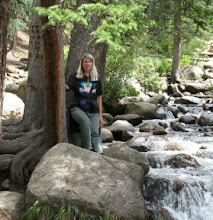I think I saw a flock of swifts last week, too, and we've had whole rashes of robins chattering away in the trees most of this month. As I walked around the block a couple weeks ago, there were 20 to 50 birds generating a cacaphony in each of several trees: here in an elm, there a locust, another rash in a cottonwood. Sizable flocks of Eurasian collared doves have been with us all winter, for the first time in memory.
"February total snowfall to date is 20.2 [at DIA, on the 24th]. The record is 22.1″ set back in 1912." So close to being the snowiest February on record. Just to recap, here's an instant replay:
Tomorrow we head into what is normally our snowiest month of the year. Will it be different, after all this February snow? I can look back, here on the blog, on six Februarys now, and it seems snow is always there: more in 2007, less in 2008. This time of year, snow captures the camera's attention. Oddly, I tend to think of February as a dry brown month, kind of like the last picture above (and who wants to take pictures of that?). Perception reflects reality only with a greater or lesser degree of distortion.
Snow (again) is promised later this week, so we'll see what March brings. As you can see from this morning's view, our white ground cover is getting tattered and is due to be refreshed.
Happy Leap Day!
















